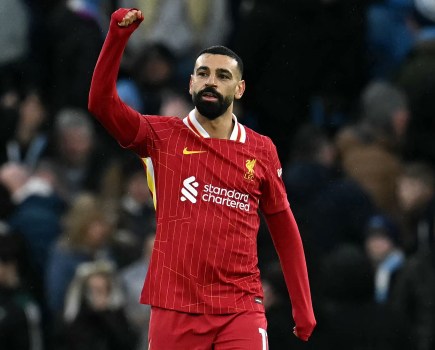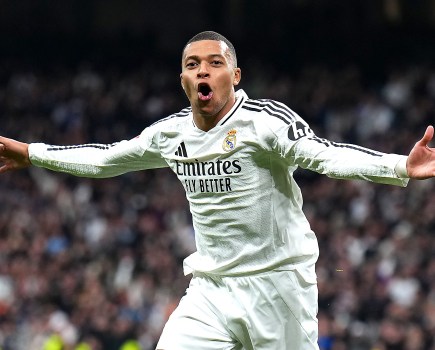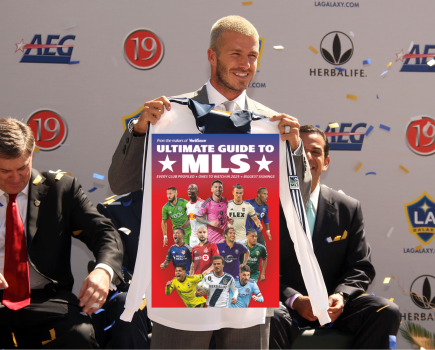“We were the disciples of beautiful football, of football à la rémoise’-
Michel Hidalgo, former Stade de Reims midfielder and manager of the French national team 1978-1984
 Before Tiki Taka and Total Football, there was ‘Champagne Football’. Throughout the 1950s and early 1960s, Stade de Reims dazzled France and the rest of Europe with their exhilarating brand of effective attacking football which, as described by the great Just Fontaine, was ‘based on one-twos and a constant search for space’. Beauty went hand in hand with efficacy as, in just over a decade, the club won six leagues titles, two French cups, one Latin Cup and made two European Cup finals. And even if their successes have been scarce since (a third division championship being their sole achievement since the sixties), that great Stade de Reims side will always remain in football legend.
Before Tiki Taka and Total Football, there was ‘Champagne Football’. Throughout the 1950s and early 1960s, Stade de Reims dazzled France and the rest of Europe with their exhilarating brand of effective attacking football which, as described by the great Just Fontaine, was ‘based on one-twos and a constant search for space’. Beauty went hand in hand with efficacy as, in just over a decade, the club won six leagues titles, two French cups, one Latin Cup and made two European Cup finals. And even if their successes have been scarce since (a third division championship being their sole achievement since the sixties), that great Stade de Reims side will always remain in football legend.
The club was founded in 1911 as La Société Sportive du Parc Pommery (assuming their slightly catchier current moniker in 1931) and gained professional status in 1935. Two years later they merged with a smaller local club and adopted their red and white kits, inspiring their not particularly original nickname, Les Rouge et Blanc. The outbreak of the Second World War obviously interrupted proceedings in France with many of Reims’ players leaving the club to serve for their country. The league was split up for the duration of the war, with a heavily weakened Reims team playing in the northern zone. On the league’s full resumption in 1946, Reims had relative success finishing fourth, second and third in their first three seasons before their maiden title win in 1949.
However, Reims’ real era of success began at the end of the next season with the simple act of their captain announcing his retirement. Albert Batteux was a talented, influential attacking midfielder who had been capped eight times by his country and had just led his to team to success in the French Cup. Following Reims’ 2-0 victory over Racing Club de Paris in the final, he hung up his boots and was almost immediately approached by the club’s chairman Henri Germain to take over the reigns as manager. Despite some opposition from the board due to Batteux’s relative youth and inexperience and his obvious close relations with the players, he got the job and set about creating a team that would go on to dominate French football for a over a decade.
As a coach, Batteux was principally opposed to systems as he thought they hindered originality and inventiveness. Whilst it would fair to describe the team’s set up as a W-M (the formation in vogue at the time), it was far more fluid than tradition dictated and gave the attacking players more creative licence. Instead of focusing on formations and the like, Batteux believed in the ‘human side of the game’ encouraging his players to work hard for each other collectively but still maintain a freedom to assert their individuality. His fondness for collectivism (an idea largely associated with socialism) stemmed from his upbringing in France. In an article in 2010 about Batteux, French football expert Philippe Auclair cited that he was still in his late teens when the Popular Front, a coalition of socialists and radicals, won the 1936 election and that his father was a ‘trade-union militant’.
In addition, Batteux had an enormous influence on those who played under him. The fact that two of the three managers to win a trophy with the French national team were former players of his (Hidalgo and Aime Jacquet at St. Etienne) is no coincidence and is a real verification of his work. There is also universal positivity in the comments from his ex-players. Fontaine stated that Batteux was ‘20 years ahead of all other football thinkers’, whilst Jean-Michel Largue, who played for Batteux’s great St. Etienne side of the 1960s, also spoke highly of his former manager:
“You hear some coaches talk about war and aggression. I never heard such words from Batteux. He would always talk about pleasure- about the joy of playing”
His aforementioned aversion to rigid formations also shines through in the words of his former players. When talking about Batteux, former Reims inside-left Roger Piantoni said “[He] almost never talked about tactics”, whilst the legendary Raymond Kopa stated that he never “straightjacketed” his players into a system.
Upon Batteux’s promotion, Reims already had a solid foundation on which to build on in the form of their defence. Composed centre-half Robert Jonquet was a calming influence at the back and, despite his relative lack of height for his position, would go on to captain both his club and country. Jonquet was joined at the back by talented full-back Simon Zimny and one of his defensive partners at the 1958 World Cup Armand Penverne. Yet despite this solidity, Batteux’s tenure at Stade de Reims did not get off the best of starts. Inconsistency, especially away from home, plagued their first two seasons. For example, in Batteux’s second season in charge (1951/52) Reims were able to beat the eventual top three teams at home (including an impressive 6-1 victory over runners-up Bordeaux), but were handed heavy defeats away to average mid-table opposition such as Racing Club de Paris (5-2) and Sochaux (4-1). After two successive fourth placed finishes, it looked like the board’s reservations about Batteux’s suitability for the job may have been well placed. But at the beginning of the aforementioned 1951/52 season, Batteux made a signing that would go on to change Reims’ fortunes.
Raymond Kopa was brought in from Angers and became revelation for his new club. The son of an immigrant Polish miner (he was born Raymond Kopaszewski), Kopa was originally a right winger, before being converted to an inside-forward where he was able to be such a creative force for Reims. Whilst he was diminutive in stature, what he lacked in height he more than made up for with his pace and legendary dribbling skills. Batteux infamously once told Kopa, “If you ever stop dribbling, I’ll take you out of the team.”
After a fairly good first season, Kopa, along with the rest of the team, would really kick on next year. Reims won the 1952/53 league title in some style; scoring at least five goals in eight of their games. Kopa himself scored 13, his most prolific output in a 34-game season.
On the back of their title win, Reims were able to taste continental success for the first time. Not with the European Cup, but the less-prestigious Latin Cup. By winning the league, they qualified for the short-lived competition that pitted the title winners of France, Portugal, Spain and Italy together (they had also qualified with their 1949 win, but were comprehensively knocked out 5-0 by Barcelona in the first round). And following victories over Valencia and the great AC Milan side featuring Gre-No-Li, they became the only French team ever to lift the trophy.
After missing out on the title next season by a point, Batteux’s side won the league again in 1954/55 and were one of the clubs invited to take part in the first European Cup, famously created after the editor of L’Equipe Gabriel Hanot took exception to the British press declaring Wolverhampton Wanderers ‘Champions of Europe’ following their 3-2 victory over Honved in 1954 and decided to create a competition for the winners of each European league. The English Football League were typically elitist about the idea and advised their champions Chelsea not to enter. Scotland’s champions Aberdeen also did not enter, but Hibernian (who had finished fifth) instead stepped forward as they were the only club with a floodlit pitch.
Reims opened the tournament against the Danish side Aarhus. A 2-0 win in Denmark followed by a 2-2 draw on home soil was enough to advance to the second round, with the Polish-born Léon Glovacki scoring three of their four goals. However, they faced tougher opposition next as they met the Hungarian champions Vörös Lobogó. They were the holders of the Mitropa Cup (a pseudo-precursor to the European cup largely contested by sides from central and eastern European countries) and featured many of the famous Mighty Magyars, including the original false nine Nandor Hidegkuti who notably grabbed a hat-trick against England in Hungary’s 6-3 win at Wembley. Two tightly contested games followed. Reims’ home leg was played in Paris due to their Stade Delaune only holding around 20,000 and ended 4-2. A 4-4 draw in Hungary was enough to see the French side through 8-6 on aggregate.
The semi finals saw Reims come across Hibernian. The Scottish side had overcome Germans Rot-Weiss Essen and the Swedish side Djurgårdens to get this far and were led by their ‘Famous Five’ up front. Gordon Smith, Bobby Johnstone, Lawrie Reilly, Eddie Turnbull and Willie Ormond were all greatly significant in the Edinburgh side’s success that decade and have since had a stand named after them at Easter Road, but they were unable to have an impact against Reims. The French side kept a clean sheet in both legs to advance 3-0 on aggregate.
But unfortunately for this great Stade de Reims side, they came across an even greater side in the final. Real Madrid had just won two league titles in Spain on the bounce and were spearheaded by one of the greatest strikers to ever grace the game in Argentinean Alfredo di Stefano. The Blond Arrow had been in inspirational form for Madrid, scoring 25 goals the season before and was instrumental in Los Merengues’ run to the final. Along with Paco Gento and Hector Rial, Di Stefano caused havoc among the Reims defence.
The game was played on the 13th June 1956 at the Parc Des Princes in Paris, making it all but a home game for Reims’, and was attended by around 38,000 people. The home leg of Real Madrid’s semi final with AC Milan, in contrast, had an attendance of over 120,000. Reims got off to a great start, racing into a 2-0 lead within the first 10 minutes. Midfielder Michel Leblond opened the scoring before Jean Templin doubled their advantage after a fumble from Madrid keeper Juan Alonso. Di Stefano then went on a brilliant run, going past a number of players, before applying a cool finish to pull one back. By the half hour mark, the Spanish champions were level through Hector Rial. Michel Hidalgo’s header restored Reims’ lead in the second half, but Marcos Alonso equalised shortly after. Rial than tapped home at the far post to seal Real’s victory.
Despite running them so close, Reims were beaten by the better side. To make matters worse, their disappointment was compounded by the toll that their European campaign had taken on their league form (finishing a lowly tenth) and by the departure of Raymond Kopa who left to join Madrid. However, the misery caused by the latter did not last for long as Batteux quickly moved to replace Kopa with the equally legendary Just Fontaine. ‘Justo’, as he was known, had just won the league and cup double with Nice and made an instant impact scoring 64 league goals in his first two seasons, helping Reims to their very own double in 1957/58. That summer, Fontaine would go on to star at the 1958 World Cup in Sweden where a Batteux-led France would finish in third place. Batteux also brought in Roger Piantoni in 1957 who was described by journalist Keir Radnedge as ‘one of the last great European inside-forwards’ and went on to form a renowned left-wing partnership with outside-left Jean Vincent for club and country that was ‘famed throughout the continent’.
Reims made the European Cup final again in 1959 after sweeping aside Ards and HPS Helsinki, before close fought out aggregate wins over Standard Liege and BSC Young Boys. But again, it was not to be for Les Rouge et Blanc as a Kopa-inspired Real Madrid came out 2-0 victors. Nevertheless, Reims would go on to win the league title next season and again in 1962.
Despite what they achieved, even the greatest sides are subject to criticism. Auclair described how some of the side’s critics in France at the time considered their brand of football as ‘too lightweight, pretty and polite to be efficient’. The viewpoint that their football was too polite is somewhat supported by comments made by Jonquet in 1996, “When we were playing it was out of the question to foul an opponent.”
Whilst these criticisms are clearly discredited by the large trophy haul that they won during the period, maybe this was the cause for their lack of success on the European front. The best modern-day comparison to the great Reims side would be Arsenal, with the two teams having more in common than just kit colour. Both played a stylish, attacking short-passing game that could mesmerise opponents but a lack of directness in their play hindered them both. The Reims/Arsenal comparison was made by Fontaine himself a few years ago,”People loved us for our style. We looked a lot like Arsenal under Arsene Wenger.”
Of course it is an unwritten rule in football that all great teams must come to an end and Reims were certainly no exception. The 1962 league title was their last major trophy and Batteux was inexplicably sacked soon after. He would go on to create his next great side in the legendary St. Etienne team of the late sixties, whilst Reims would spiral into eternal decline. Their renowned academy stopped producing the great players that it had in the past (with Robert Pires being the only notable name in the sixty years since the days of Jonquet and company) and after dropping to Ligue 2 a couple of times, they went down for good in 1979. Financial troubles and liquidation followed and the club had to re-launch in the early 1990s in the third tier of French football. Since then they have been bouncing between the second and third divisions.
Whilst the club were recently promoted to Ligue 1 for the first time in over three decades, it is unlikely that they will come to anywhere near to matching the heights set by their predecessors in the fifties and sixties. Batteux’s Reims were pioneers whose style of eye-catching football still holds up today, even from the black and white poorly edited Youtube footage that remains. They had a massive influence on French football and it is a real testament to that great Reims side that a short corner is still known in France to this day as a corner ‘a la remoisé’. The final word, like the first, should go to Michel Hidalgo who perfectly summarised Reims and their ethos:
“A short game, played with vivacity and technique. It was sparkling football. Everything was done with quality of play in mind, for the sake of having the ball at your feet and attacking’
This article originally appeared in In Bed with Maradona






